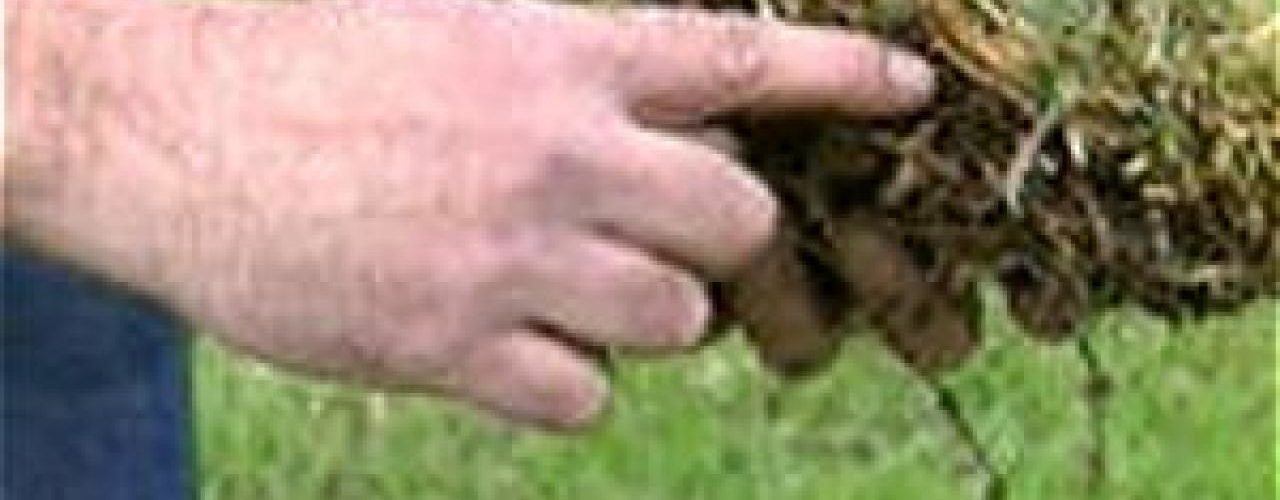Thatch is a straw-like build up of dead organic matter that settles into your lawn between the grass and its roots. The organic matter consists of grass clippings and other yard debris that does not get raked up or blown away.
You may notice that your lawn is developing an unhealthy look with brown patches. Perhaps you have noticed that in heavy rains the water tends to run off rather than soak into the lawn. These can all be symptoms of a heavy thatch build up.
Over a period of time the thatch gets so dense that it prevents water, air and nutrients from getting to the soil and roots. The thatch, if not removed or forced to decay rapidly, can leave an otherwise healthy lawn susceptible to undesirable lawn pests and root decay.
Contents
There are essentially three ways to dethatch a lawn:
- Use a Manual Dethatcher Rake
- Use a Motorized Power Dethatcher Rake
- Use a Chemical Treatment
Manual Dethatcher Rake
A dethatcher rake, unlike a grass rake, has sturdy, wide blades that are fixed and slightly rounded to dig into the thatch. Most retail stores or garden centers sell dethatcher rakes with fixed blades and an adjustable handle for around $35.00.
Pick a starting spot in the lawn and working in a regular pattern, pull the rake through the grass, digging into the thatch. Using an upward motion, pull the thatch up and out of the grass being careful not to dig too deeply and disturb the root system.
Continue until you have worked the entire lawn, collecting the thatch in piles as you move along. Dispose of the thatch in your compost bin or according to your municipality’s requirements for lawn waste.
While this is the best choice for small lawns on a small budget, it is also the most time consuming and laborious.
Motorized Power Dethatcher Rake
A motorized power dethatcher rake is an excellent choice for large lawns and can be rented at many home and garden stores at an hourly rate. The rake which is gas powered consists of blades similar to the manual dethatcher rake and can usually be adjusted to change how deeply the blades dig into the soil. The power rake will do all the hard work for you while you walk it the same as your mower.
Unless you have a really deep buildup of thatch it may be best to start dethatching with the blades at a higher level to avoid damaging the root system.
Select a starting point in the lawn and let the dethatcher do the work, digging into the thatch. Walk in a regular pattern over the lawn, overlapping slightly with each pass. If you determine that a second, deeper treatment is needed, start at a different point, perpendicular to your first pass.
After the power rake has churned up the thatch, rake up the debris with a grass rake and dispose of it.
Chemical Treatment
If your thatch layer is not too thick or if you would like to maintain your thatch with the least amount of effort you may want to consider a liquid, chemical treatment for dethatching your lawn.
Thatch in itself is not a bad thing for your lawn; a healthy layer can prevent your lawn from drying out too quickly during dry spells. If the thatch layer is not allowed to get too thick, it will decay naturally over time, sending good nutrients into the roots and soil.
There are chemical products that are designed to speed up the natural decay of lawn thatch. Regular spraying of your lawn with these liquid dethatcher products can be an excellent choice for lawns large or small.
When to Dethatch a Lawn
The best time of year to dethatch a lawn is prior to the heaviest growth season for your area and before the hottest season.
If you check your lawn in early spring, you can determine how thick the layer of thatch is and if it’s time to remove it before problems occur. Dig down in the grass with your fingers until you come to the base of the grass. Examine the thatch layer and determine the depth. If it is an inch or more until you come to the soil and root layer, it is time to dethatch.
It is best to dethatch your lawn after a light rain. If dethatching after a heavy rain, too much of the soil and roots will be tightly attached to the thatch and you risk pulling out good grass and roots along with the thatch.
After you have dethatched your lawn it is a good time to lay down a fresh bag of grass seed. Keep it lightly watered every day and in two weeks your lawn will look fabulous!



